The West Indies captaincy has proved a traumatic experience for several of the many who have held it in the decades of decline.
Its effects triggered Richie Richardson’s acute fatigue syndrome that required a period out of the game.
Brian Lara initially gave it up after two years of “modest success and devastating failure” to get his mind, and his game, back on track.
Shivnarine Chanderpaul quit after a year and a bit as it was undermining his batting.
Even the vice-captaincy has been a problem. Ramnaresh Sarwan suddenly resigned, without explanation, as Chris Gayle’s deputy prior to the tour of New Zealand two years ago.
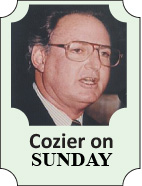
Head coach Ottis Gibson, the 41-year-old Barbadian just 10 months into his job himself, sees it as one of his responsibilities to help him overcome them.
“It’s been tough for him,” Gibson admitted following the abortion of the rain-ruined tour of Sri Lanka last week, Sammy’s first at the helm.
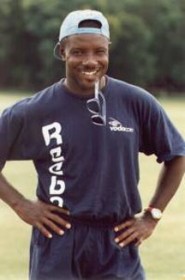
“I’ve said to him that one of the key things in any partnership-leadership situation is the relationship between captain and coach,” he said. “So far, we’ve had a fantastic relationship.
“We talk a lot about the game, we talk a lot about leadership,” he added. “I’ve never captained an international team but I’ve had years working with lots of different captains and I think I understand what he has to do to make the position work for him.”
The reality is that it was always going to be tough for Sammy.
His elevation from occasional selection in the Test team (eight matches since his sensational 7-66 debut against England three and a half years ago) to captain was effectively by a process of elimination.
“We all know the circumstances that led us to this point,” Gibson said, referring to the decisions by previous captain Chris Gayle and vice-captain Dwayne Bravo to turn down West Indies Cricket Board (WICB) offers of contracts that just about eliminated them from consideration.
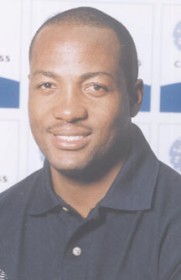
With Chanderpaul’s batting immediately thriving when he returned to the ranks, there was no way he could be persuaded back. Sarwan, in the WICB’s bad books to the extent that he wasn’t even offered a contract, wasn’t in the frame.
So Sammy came out top of a very short list of candidates.
The demands on him were heightened by the understandable optimism of the people of his native St. Lucia who rejoiced that one of their own, already their only Test player, was chosen for the highest station in West Indies cricket.
The new captain was feted at a public function at the Beausejour Stadium and appointed ambassador. As a consequence, it probably raised his own goals unrealistically high. That, certainly, is Gibson’s view.
“I’ve said to him he has to be his own man,” he said. “He doesn’t have to think that he suddenly has to go out there and be the best batsman, the best bowler, the best fielder. The main thing is to be a good leader.”
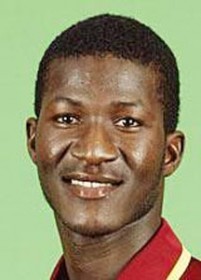
Gibson felt Sammy’s concern with his own performance led to some “bad shot-making decisions” in his three innings in the series. He was out first ball in the first Test, for two in the second and for eight in the third.
“He needs to relax a bit and perform at the level he knows he can perform at,” he explained. “He can’t be averaging 20 with the bat (it was 19.4 in eight Tests prior to Sri Lanka) and suddenly think that because you’re promoted to the leadership, you’re going to average 40. It doesn’t work like that.
“He’s been put into the position because of his leadership skills and, once he leads the team well and gains confidence from that, his performances are likely to improve as well.”
Gibson was satisfied both with Sammy’s medium-pace bowling and his overall leadership in Sri Lanka.
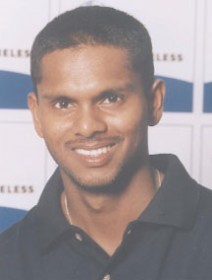
He bowled “how we know he can bowl”, pegging away economically to maintain pressure on the opposition.
“He’s no 100 miles-an-hour tearaway, of course, but he’s tight and effective because he gives nothing away and creates opportunities for others to take wickets,” Gibson said.
Sammy’s only two wickets in the series were Sri Lanka’s best, Mahela Jayawardene and captain Kumar Sangakkara, in the second Test. They cost him 75.5 runs apiece but his economy rate of 2.55 runs an over was the only one below three
.
According to Gibson, Sammy fit comfortably into the role as captain.
“He’s shown the signs of leadership we knew he had,” he said. “That is why he has been put in that position. The players responded to him through the way he dealt with them and spoke to them.”
Sammy’s next assignments are back in Sri Lanka in late January for the rescheduled ODIs followed immediately by the World Cup in India, Bangladesh and
Sri Lanka.
He should be more at ease in the shorter format where he has been a more frequent selection and has a stronger record than in Tests.
He bats at an average of 24.19 with a strike rate of 95.66 runs per 100 balls in 43 ODIs. His bowling average is high at 43 but balanced by an economy rate of just under 4.5 an over.
The World Cup is a high-profile tournament from which the progress of the team and, accordingly, the leadership of Sammy and Gibson will be scrutinised.
From the outset, the WICB gave Sammy an extraordinary vote of confidence, announcing that his appointment would continue through until the end of the 2011 Digicel home series of Tests, ODIs and T20s against Pakistan and India in July.
A lot of cricket is to be played between now and then. It will test the latest man in charge to the fullest, just as it has done all his recent predecessors.



